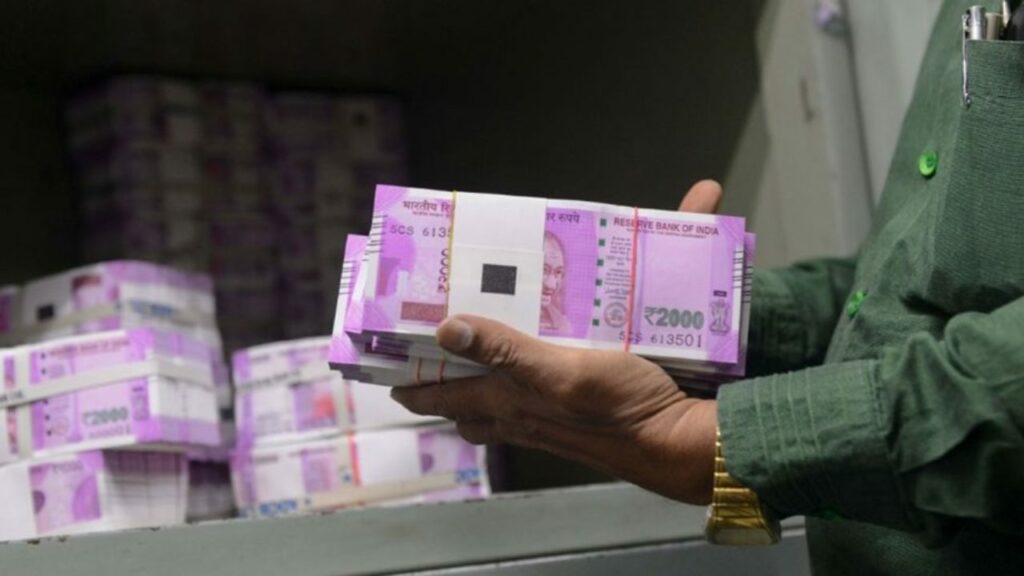The Reserve Bank of India (RBI) recently published its annual report, revealing a substantial increase in the share of ₹ 500 denomination notes in the overall currency circulation. This change is primarily attributed to the withdrawal of ₹ 2,000 denomination notes, impacting various aspects of India’s currency landscape.

Increased Share of ₹ 500 Notes
As of the end of March 2024, the share of ₹ 500 denomination notes has surged to 86.5% of the total currency in circulation, compared to 77.1% in the previous year. The central bank’s report highlights that this significant rise is mainly due to the withdrawal of ₹ 2,000 denomination notes announced in May 2023. The share of ₹ 2,000 notes has dramatically decreased from 10.8% to a mere 0.2% over the same period.
Volume and Value Dynamics
Volume-wise, the ₹ 500 denomination topped the list with 5.16 lakh notes, while the ₹ 10 denomination came in second with 2.49 lakh notes as of March 31, 2024. The report also notes that the overall value and volume of banknotes in circulation increased by 3.9% and 7.8%, respectively, in FY24. This is a notable shift from the previous fiscal year’s increase of 7.8% in value and 4.4% in volume, indicating a changing pattern in currency circulation.
Withdrawal of ₹ 2,000 Notes
The withdrawal of ₹ 2,000 notes, which were introduced following the 2016 demonetization, played a pivotal role in these changes. The RBI report states that about 89% of these notes had been in circulation for over four years and were due for replacement. Additionally, these high-denomination notes were not commonly used for transactions, further justifying their withdrawal.
Impact on Counterfeit Detection
The withdrawal of ₹ 2,000 notes also had a significant impact on counterfeit note detection. The number of fake ₹ 2,000 notes detected jumped to over 26,000 in FY24 from 9,806 in the previous year. Conversely, the detection of counterfeit ₹ 500 notes declined from 91,110 pieces in FY23 to 85,711 pieces in FY24, suggesting improved security measures for the ₹ 500 denomination.
Central Bank Digital Currency (CBDC) Update
The report also provided an update on the central bank digital currency (CBDC) or e-rupee pilot. The overall outstanding value of the e-rupee reached ₹ 234.12 crore by March 2024, a substantial increase from ₹ 16.39 crore in March 2023. Notably, ₹ 164 crore, or 70%, of the e-rupee is in the ₹ 500 denomination, highlighting its dominance even in the digital currency space.
Public Sentiment and Security Printing
A survey conducted by the RBI among over 22,000 respondents across the country indicated that cash remains prevalent despite the growing traction of digital payment modes. The RBI also reported an increase in spending on security printing, from ₹ 4,682 crore in the previous year to ₹ 5,101 crore in FY24, underscoring its commitment to enhancing currency security features.
Conclusion
The RBI’s annual report provides a comprehensive overview of the evolving currency landscape in India. The substantial increase in the share of ₹ 500 denomination notes, driven by the withdrawal of ₹ 2,000 notes, reflects a significant shift in currency usage and management. With ongoing efforts to enhance digital currency adoption and improve security features, the RBI continues to adapt to the changing financial environment.













